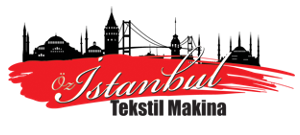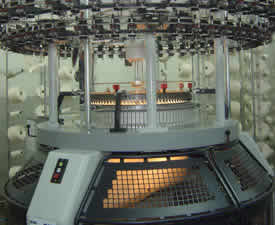[:tr]Yuvarlak örme makineleri el örmeciliğinden esinlenerek uzun bir süre zarfında oluşan bilgi birikiminin, mekanik yöntemlerle ilmek oluşumu gerçekleştirmeye yönelmesiyle meydana çıkmıştır. İlk olarak İngiltere’de William Lee tarafından 1589 yılında el örme makinesi şeklinde mekanik ilmek oluşumu gerçekleştirilmiştir. Bu makinede ilk çorap üretimi yapılmıştır. Ancak örme iğnelerinin dairesel bir şekilde dizilmesi 1798 yılında Monsievi Decroix tarafından düşünülmüş ve yuvarlak örme makinelerinin temeli bu yıllarda atılmıştır.
İlk pratik kullanılma uygun yuvarlak örme makineleri ise 1836’da Fransa’da Jonve tarafından geliştirilmiş ve daha sonraki yıllarda Berthelot tarafından da gelişimine devam edilmiştir. Bu ilk makineler küçük çaplı, çorap üretimine uygun üretim yapan yuvarlak örme makineleridir. Özellikle örme iğnelerinin yapılarındaki ve iğne hareketlerini düzenleyen sistemlerdeki gelişmeler, yuvarlak örme makinelerinin gelişmesine olumlu etkiler yapmıştır.
Yuvarlak örme makinelerinde 1878’de Griswold çift katlı, RR ribana örme tekniğini, 1910’da da Robert Walter Scott firması interlok örgü tekniğini bulmuştur. 1918 yılında da Wildt firması tarafından iki ucu kancalı iğnelerle ve iğne sürgülerinin bulunmasıyla, LL örme (haraşo örme) tekniği yuvarlak örme makinelerinde uygulamıştır.
Bütün bu gelişmelerden sonra, ancak 1935 yılında Mayer firması tarafından gerçek anlamda ilk yuvarlak örme makinesi yapılmıştır. 1939 yılında da seri üretimlerine başlanmıştır.
İkinci dünya savaşı yıllarında tamamıyla duran bu gelişmeler savaşın bitmesiyle 1946 yılından sonra süper denecek bir gelişme göstermiştir.1963 yılından itibaren tüm tekstil makineleri içinde ilk olarak yuvarlak örme makinelerine elektronik uygulanmıştır. Bazı firmalar ise elektronikten çok, iplik iletme sistemlerini geliştirerek hızı arttırmak ve belli amaçlara yönelik makineler yapma konusu üzerinde durmuşlardır.[:en]Circular knitting machines of knowledge inspired by the hand- knitting formed over a long period , have emerged with the formation of loops tend to perform mechanically. Originally from England by William Lee in 1589 in the form of hand knitting machines, mechanical loop formation was performed . Production of the first sock is made in this machine . However, the knitting needles arranged in a circular pattern of thought by the Monsiev Decroix in 1798 and laid the foundation of circular knitting machines this year.
The first practical use of suitable circular knitting machines developed by Jonv in France in 1836 and has been continued by Berthelot further development in subsequent years. This first machine for small-diameter , circular knitting machines are engaged in the production of socks production . In particular, developments in the knitting needle and the needle moves in the systems governing structure and has made a positive impact on the development of circular knitting machine.
Griswold double storey circular knitting machines in 1878 , RR rib knitting technique, Robert Walter Scott in 1910, the company has found the interlock knitting techniques. The two ends of the needle hook Wildt by the company in 1918 and by the presence of needle slide , LL knitting ( knitting haraşo ) has implemented the technique of circular knitting machine.
After all these developments , but in May 1935 the company was made by the first circular knitting machine in the true sense . In 1939 it started its mass production.
The second world war years to a complete standstill these developments have shown an improvement will be called super after the 1946 end of the war tir.1963 </ span> was first applied electronics to circular knitting machines in the whole textile machinery since . Some companies are very electronic , fiber transmission system to increase the speed of developing and dwelled on the issue of making machines for specific purposes.[:]


